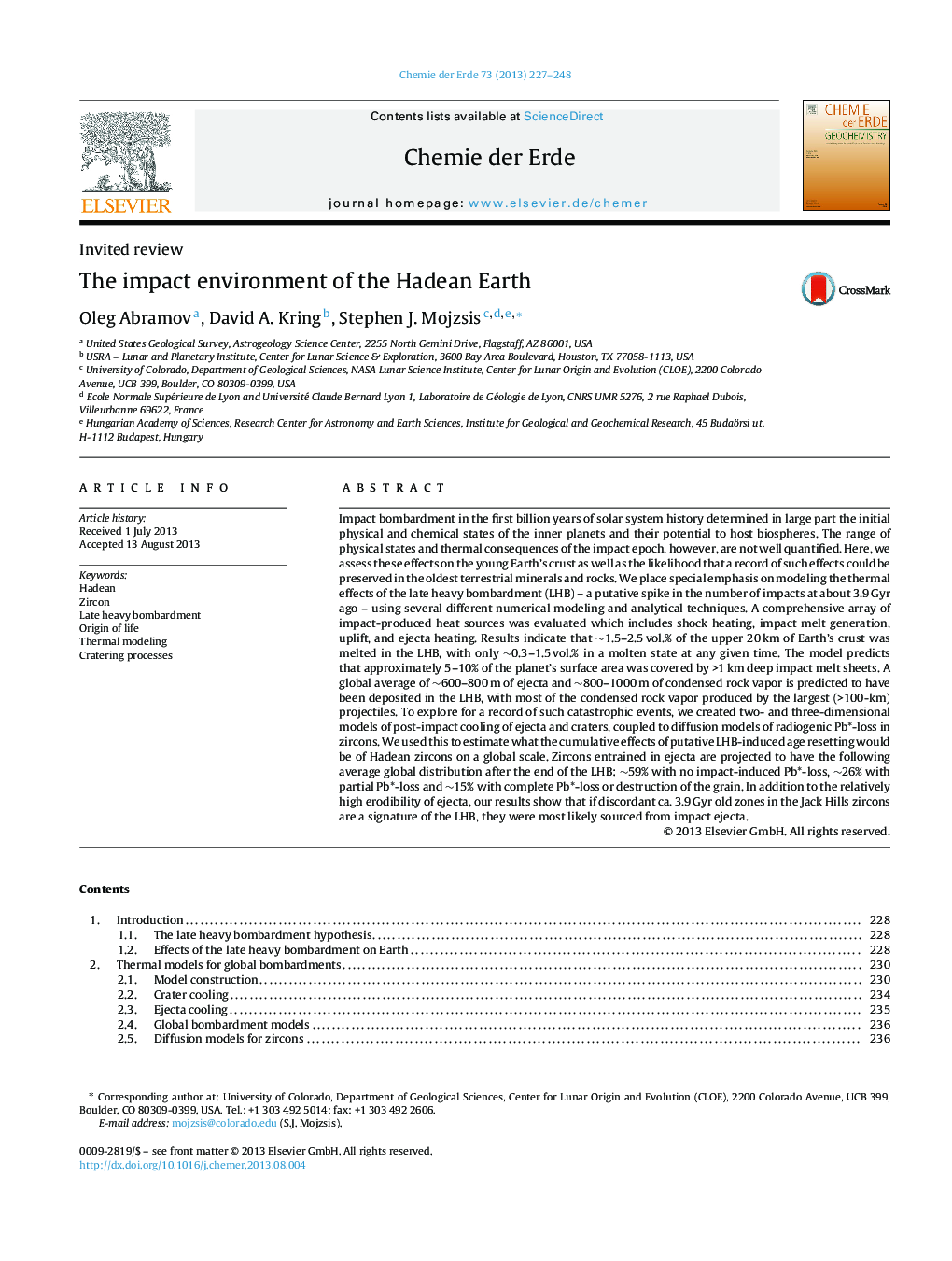| کد مقاله | کد نشریه | سال انتشار | مقاله انگلیسی | نسخه تمام متن |
|---|---|---|---|---|
| 6305862 | 1307334 | 2013 | 22 صفحه PDF | دانلود رایگان |
عنوان انگلیسی مقاله ISI
The impact environment of the Hadean Earth
دانلود مقاله + سفارش ترجمه
دانلود مقاله ISI انگلیسی
رایگان برای ایرانیان
کلمات کلیدی
موضوعات مرتبط
مهندسی و علوم پایه
علوم زمین و سیارات
ژئوشیمی و پترولوژی
پیش نمایش صفحه اول مقاله

چکیده انگلیسی
Impact bombardment in the first billion years of solar system history determined in large part the initial physical and chemical states of the inner planets and their potential to host biospheres. The range of physical states and thermal consequences of the impact epoch, however, are not well quantified. Here, we assess these effects on the young Earth's crust as well as the likelihood that a record of such effects could be preserved in the oldest terrestrial minerals and rocks. We place special emphasis on modeling the thermal effects of the late heavy bombardment (LHB) - a putative spike in the number of impacts at about 3.9Â Gyr ago - using several different numerical modeling and analytical techniques. A comprehensive array of impact-produced heat sources was evaluated which includes shock heating, impact melt generation, uplift, and ejecta heating. Results indicate that â¼1.5-2.5Â vol.% of the upper 20Â km of Earth's crust was melted in the LHB, with only â¼0.3-1.5Â vol.% in a molten state at any given time. The model predicts that approximately 5-10% of the planet's surface area was covered by >1Â km deep impact melt sheets. A global average of â¼600-800Â m of ejecta and â¼800-1000Â m of condensed rock vapor is predicted to have been deposited in the LHB, with most of the condensed rock vapor produced by the largest (>100-km) projectiles. To explore for a record of such catastrophic events, we created two- and three-dimensional models of post-impact cooling of ejecta and craters, coupled to diffusion models of radiogenic Pb*-loss in zircons. We used this to estimate what the cumulative effects of putative LHB-induced age resetting would be of Hadean zircons on a global scale. Zircons entrained in ejecta are projected to have the following average global distribution after the end of the LHB: â¼59% with no impact-induced Pb*-loss, â¼26% with partial Pb*-loss and â¼15% with complete Pb*-loss or destruction of the grain. In addition to the relatively high erodibility of ejecta, our results show that if discordant ca. 3.9Â Gyr old zones in the Jack Hills zircons are a signature of the LHB, they were most likely sourced from impact ejecta.
ناشر
Database: Elsevier - ScienceDirect (ساینس دایرکت)
Journal: Chemie der Erde - Geochemistry - Volume 73, Issue 3, October 2013, Pages 227-248
Journal: Chemie der Erde - Geochemistry - Volume 73, Issue 3, October 2013, Pages 227-248
نویسندگان
Oleg Abramov, David A. Kring, Stephen J. Mojzsis,